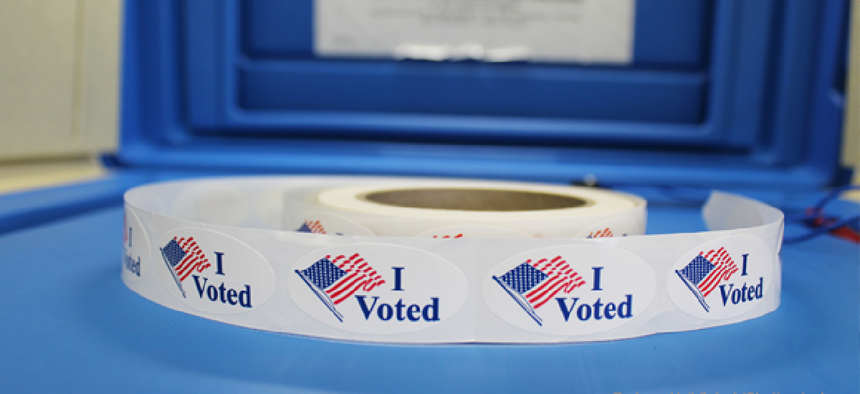Streamlining the voting process for cities


Connecting state and local government leaders
With voters and poll watchers alike focusing on the voting process, local governments can implement technology solutions that update decades-old processes, facilitate voter engagement while also meeting regulatory requirements.
With the 2018 midterm elections set to take place Nov. 6, local governments are preparing for a record number of votes submitted by mail, in-person or dropped off at polling places.
Government officials, however, are faced with managing election processes rife with time-consuming, manual tasks that are opaque and difficult to scale. Faced with an influx of voters and -- in most cases -- no additional resources, agencies are having to reimagine the voting experience, implementing technology solutions to update decades-old processes, facilitating voter engagement while also meeting regulatory requirements.
The City of Aspen, Colo., eliminated much of the manual data entry and automated tasks involved with the voting process -- ultimately saving poll workers’ time and taxpayer dollars while minimizing risk of error and maintaining auditability -- when it reengineered its election process with information management software.
According to Colorado state law, new voters can register until Election Day, and voters can submit up to three ballots (each successive ballot voids the previous one). Aspen had been tracking votes with 12 handwritten logs used for various ballot processes that were later re-entered into a master polling spreadsheet. For in-person voting, poll workers searched through printed registration lists to determine whether a voter was at the correct voting center. New voters who registered at the county clerk’s office had to bring a printed certificate from the clerk to the vote center, where their registration was then confirmed by a poll worker by calling the county clerk. For voters who moved to a different precinct or changed their name, poll workers had to call the county clerk to confirm these changes as well as verify signatures on mail-in or drop-off ballots against a printed list.
Digitally transforming elections
With a clear set of operational requirements in hand, Aspen officials found and implemented an information management solution that streamlined the entire voting process, starting with registration. Today, the city uses its solution to manage registered voters’ information and images of their signatures digitally. The city clerk can also run an automated workflow that parses the information and makes updates as necessary.
Because Colorado gives each voter three chances to vote, Aspen also uses the new solution to keep track of submitted ballots. Each mailed ballot is identified by a unique barcode that enables election judges to check the signature on the ballot against one that’s been digitally stored. If they don’t match up, the city clerk contacts the person and verifies the identity in a different way.
The on-site voting process has also been transformed. Now, when a person arrives to vote, the election judge checks the person in by finding the digital voter’s signature image that the city has on file. Election judges use the solution’s electronic forms to record who has voted, including newly registered voters’ information, which is also automatically saved and organized digitally.
Benefits of a modern election process
Powerful automation tools made all of the difference in the municipality’s election process. Today, the city’s streamlined processes have vastly improved the voter experience and staff efficiency by
- Reducing manual data entry with using a workflow tool that updates voter information and tracks submitted ballots.
- Saving election judges’ time processing ballots with an intuitive electronic form that tracks ballot submissions and handles newly registered voters.
- Increasing accuracy and information completeness by simplifying how election judges verify and match signature images on ballots.
- Minimizing confusion and miscommunication with automation that updates submissions in real time.
- Maintaining security and auditability by applying access rights and giving the city the ability to easily reconcile the number of ballots with the number of voters.




